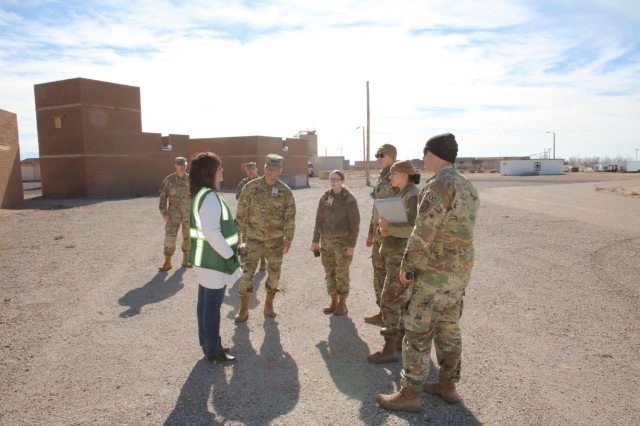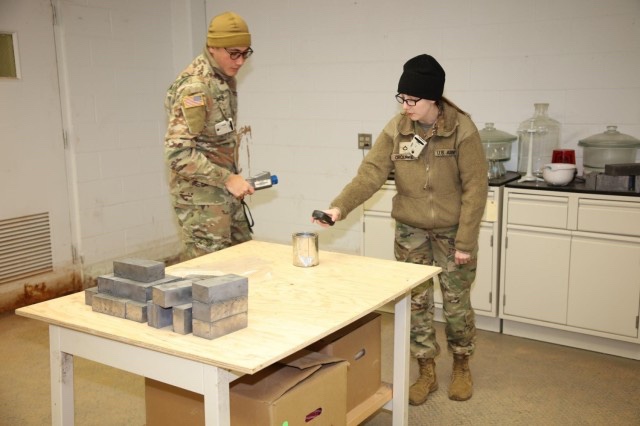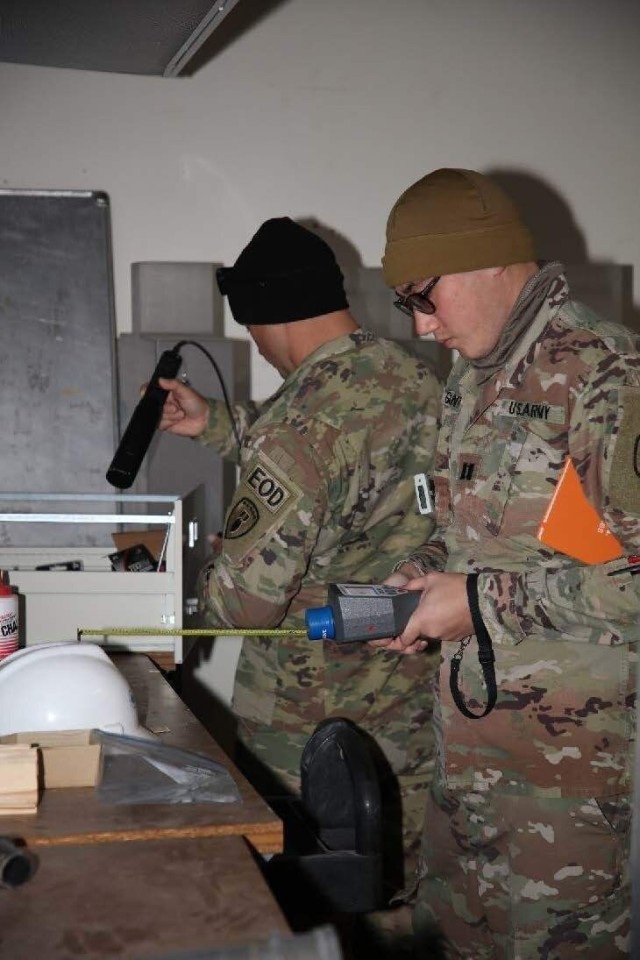
KIRTLAND AIR FORCE BASE, N.M. — Units from the U.S. military’s premier all hazards command trained together during a radiological course at the Defense Nuclear Weapons School on Kirtland Air Force Base, New Mexico.
Soldiers from the 20th Chemical, Biological, Radiological, Nuclear, Explosives (CBRNE) Command’s 1st Area Medical Laboratory and Nuclear Disablement Teams both participated in the Applied Radiological Response Techniques Level 2 course.
The five-day course is designed to apply radiological hazard theories and develop applied radiological problem-solving methods.
“Approximately 20 percent of the course is conducted in detector laboratories while the remaining course time is dedicated to hands-on radiological experiences and the interpretation of survey data,” said Capt. David D. Manzanares, a Nuclear Medical Science Officer from Nuclear Disablement Team 1. Originally from Miami, Manzanares has been in the U.S. Army for 18 years and served overseas in Baumholder, Germany.

NDTs contribute to the nation’s strategic deterrence by staying ready to exploit and disable nuclear and radiological weapons of mass destruction infrastructure and components to deny near-term capability to adversaries and facilitate WMD elimination operations. The U.S. Army has three NDTs — the NDT 1 “Manhattan,” NDT 2 “Iron Maiden” and NDT 3 “Vandals.”
The 1st AML identifies and evaluates health hazards through unique medical laboratory analyses and rapid health hazard assessments of nuclear, biological, chemical, endemic disease, occupational and environmental health threats. The one-of-a-kind medical laboratory is based on Aberdeen Proving Ground, Maryland.
Together with the 1st AML and three NDTs, the 20th CBRNE Command is home to 75 percent of the active-duty Army’s Explosive Ordnance Disposal (EOD) technicians and Chemical, Biological, Radiological, Nuclear (CBRN) specialists, as well as five Weapons of Mass Destruction Coordination Teams.
Headquartered on Aberdeen Proving Ground, Maryland, the 20th CBRNE Command has units on 19 bases in 16 states that take on the world’s most dangerous hazards in support of joint, interagency and allied operations around the world.

Tracing its roots to the Manhattan Project, the Defense Nuclear Weapons School provides training on radiological and nuclear weapons, incident command and response and CBRNE modeling for the U.S. Department of Defense and other Federal, state and local agencies.
The school is accredited by the American Council on Education, Chairman of the Joint Chiefs of Staff, U.S. Department of Homeland Security and the State of New Mexico.
Col. Matthew J. Grieser, the commander of the 1st Area Medical Laboratory, and his senior enlisted leader, Command Sgt. Maj. Jackie S. Mims, visited the Soldiers during the course.
Grieser is a native of Mulino, Oregon, who has deployed to Afghanistan four times and Iraq five times. He has also served in Haiti, Panama and New Orleans following Hurricane Katrina.
“The skills gained from this course will make us even more effective,” said Grieser. “It takes teamwork to tackle the kinds of challenges that we confront and we have many great partners, including the professionals at the Defense Nuclear Weapons School.”
By Walter Ham

